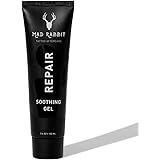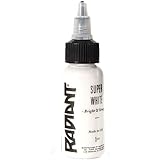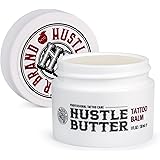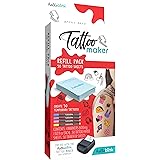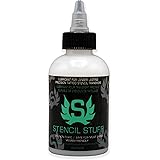The journey to mastering calligraphy offers immense satisfaction. Many find that consistent practice, especially on foundational letters, builds crucial skills. The captivating video above demonstrates the fluid art of creating the calligraphy letter M. It showcases the rhythmic flow and precision involved in forming this significant character. This guide will expand on those visuals, offering insights into forming the elegant letter ‘M’. We will discuss essential strokes and helpful practice methods. Understanding the nuances of each stroke empowers your calligraphic journey.
Understanding the Calligraphy Letter M
The letter ‘M’ is a cornerstone in many calligraphy scripts. Its structure often involves a series of connected upstrokes and downstrokes. This letter demands consistent spacing and pressure. Mastering its form significantly improves your overall penmanship. The ‘M’ can appear daunting at first glance. However, breaking it down into smaller components helps immensely. Focus on the fundamental principles of your chosen script. This disciplined approach ensures beautiful results every time.
Key Strokes for the Letter M
Forming the calligraphy letter M relies on basic strokes. These include thin upstrokes and thick downstrokes. Each stroke requires careful control of your pen or brush. Start with an entry stroke, often a thin upstroke. Next, apply pressure for a thick downstroke. Lift your pen for the next component. Create another thick downstroke, ensuring parallelism. Connect these with a final thin upstroke. Practicing these individual strokes builds muscle memory. This consistent practice leads to more graceful letterforms.
- **Entry Stroke:** Begin with a delicate, thin upstroke.
- **First Downstroke:** Apply consistent pressure for a thick line.
- **Connecting Upstroke:** Transition with a light, fine upstroke.
- **Second Downstroke:** Create another parallel, thick downstroke.
- **Exit Stroke:** Finish with a light, flowing upstroke.
Choosing the Right Tools for Calligraphy
The tools you use greatly impact your calligraphy results. A quality nib and appropriate paper are essential. Different nibs create varying line widths and flexibility. Broad-edge nibs suit foundational hands like Italic. Pointed pens are perfect for Copperplate or Spencerian scripts. Smooth paper prevents ink bleeding and feathering. Also, selecting the right ink ensures crisp, vibrant lines. Explore various options to find what feels best. The right tools enhance your learning experience.
Nibs and Holders
Nibs are the heart of your calligraphy practice. They come in many shapes and sizes. Pointed nibs produce elegant thick-and-thin lines. Broad-edge nibs create uniform stroke widths. Choose a comfortable pen holder. Oblique holders help with specific script angles. Straight holders are versatile for many styles. Experiment with different nibs and holders. Find the combination that suits your hand. This personal preference improves your control and comfort.
Inks and Paper
Ink choice affects line quality and color. India ink is dense and permanent. Walnut ink offers rich, sepia tones. Acrylic inks provide vibrant, opaque colors. Always test new inks on your chosen paper. Paper quality is equally crucial for smooth strokes. Avoid textured or highly absorbent papers. Bristol board or Rhodia paper are excellent choices. Their smooth surfaces allow the nib to glide. This smooth glide prevents ink feathering. The right paper enhances your artistic output.
Developing Your Calligraphy Practice
Consistent practice is key to improving your calligraphy. Dedicate regular time to your craft. Even short, focused sessions yield significant progress. Start with basic drills before attempting full letters. These drills build strength and consistency. Copying exemplary letterforms helps you internalize good habits. Do not fear making mistakes; they are part of learning. Embrace each practice session as a step forward. Your dedication will transform your calligraphy letter M.
Effective Drills for the Letter M
Specific drills help refine your calligraphy letter M. Practice uniform upstrokes and downstrokes. Focus on maintaining consistent pressure. Drill parallel lines repeatedly. This strengthens your hand for the ‘M’s vertical elements. Work on connecting strokes smoothly. The transition from thick to thin is vital. Repeat these drills until they feel natural. They build the foundational control you need. Regular drills make complex letters easier.
Maintaining Consistency and Flow
Consistency is a hallmark of skilled calligraphy. Strive for uniform height, width, and slant. Use guidelines to maintain your letter proportions. Develop a steady rhythm while writing. This rhythm improves the flow of your strokes. Avoid rushing your work; take your time. Each stroke deserves your full attention. Observe the spacing between letters carefully. Consistent spacing creates a harmonious appearance. Your overall composition will look more polished.
Exploring Different Styles of Letter M
The letter ‘M’ adapts beautifully across various calligraphy styles. Each style presents a unique interpretation. From the classic elegance of Copperplate to the bold statement of Gothic, ‘M’ can look very different. Understanding these variations expands your creative repertoire. Explore different historical scripts. Study how master calligraphers form their ‘M’. This exploration will inspire your own unique style. It enriches your journey in the satisfying art of calligraphy.
Classic Calligraphy Styles
Traditional scripts offer rich inspiration for the letter ‘M’. Copperplate ‘M’ features delicate flourishing and a strong slant. Italic ‘M’ boasts sharp angles and a more upright posture. Blackletter or Gothic ‘M’ is robust and architectural. Each style demands specific pen angles and pressure. Study historical examples for authentic forms. Recreating these styles builds a strong foundation. You learn precision and historical context.
Modern and Expressive M’s
Modern calligraphy offers freedom and personal expression. The ‘M’ can be whimsical or highly stylized. Experiment with exaggerated ascenders or descenders. Play with different ink colors and textures. Combine elements from various scripts. Modern calligraphy allows for unique flourishes. Do not be afraid to break traditional rules. Let your personality shine through your art. This personal touch makes your calligraphy truly yours.
The video demonstrates the meditative process of creating the calligraphy letter M. Remember, every master began as an amateur. Practice is the bridge between aspiration and achievement. Continue to refine your strokes and explore new styles. Your dedication will yield beautiful and rewarding results. The satisfying art of calligraphy awaits your continued exploration.


